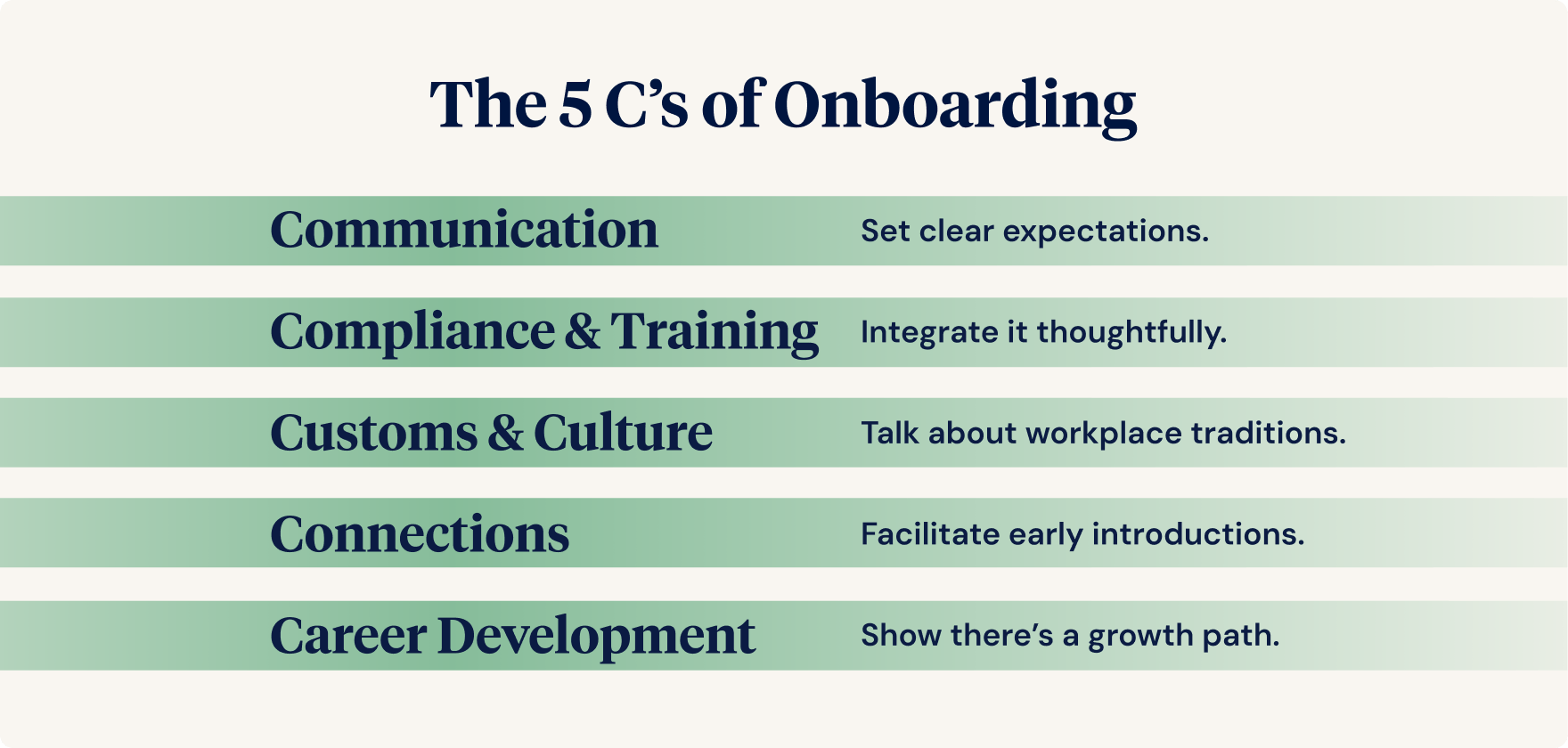Can you remember your first day on the job? Was it a warm welcome or a logistical mess? A sincere greeting from your new manager, a checklist and a "good luck"?
In Aged Care, that first impression isn’t just a feel-good moment. It’s often the difference between a loyal, long-term employee and a resignation letter by Friday.
Effective onboarding is also a compliance expectation under the Strengthened Aged Care Quality Standards. Specifically, Standard 2.9: Human Resource Management highlights the need for competency-based training, supervision, and workforce support structures, beginning with a well-structured induction.
Investing in onboarding is not just best practice; it’s a regulatory requirement tied to quality care and workforce sustainability.
With aged care workers in high demand and able to pick and choose employers, onboarding is no longer a tick-box exercise. It’s a strategic tool, and the costs run deep when it’s done poorly.
Connection Before Compliance
Human connection matters. Yet too often, onboarding becomes a cascade of policy downloads, rushed paperwork, and mandatory eLearning. Compliance is essential for providing excellent care, but starting with an early, meaningful connection to make people feel welcomed and valued is critical.
Consider:
- A welcome pack, name badge, uniform, and company merchandise. This is a small gesture of belonging; you are on our team.
- A handwritten note from the manager: personal touch, instant morale lift.
- A welcome phone call or visit from HR on the day the new employee starts.
- A buddy assigned from day one: a new friend, not just a colleague.
I’ve delivered over 80 orientation programs for over 1,000 aged care staff, and I’ve seen it firsthand: Those who feel welcomed stay—those who don’t start browsing for a new job by week two.
Unfortunately, many first-day experiences are far from ideal:
"My first day was a buddy shift with an agency staff member."
"On my first day, no one knew that I was starting. I sat in the foyer for 30 minutes while the administration officer searched for someone to show me around."
"I couldn’t even get into the facility. No one told me the gate code, and I didn’t have a contact name to call."
The Temptation to Skip and Why It Backfires
According to CEDA, Australia’s workforce shortage in the Aged Care sector may reach 110,000 by 2030. There is an estimated shortage of registered nurses in residential aged care, approximately 5900, and a shortfall of 30,000 direct care workers. With staffing shortages and mounting pressure to fill shifts, there’s a growing temptation to rush or skip onboarding entirely.
The thinking is understandable: “We’re short-staffed, we need staff now.”
But skipping onboarding has grave consequences. New employees miss vital information that sets them up for success, and they lose the chance to build relationships with colleagues who will support them in their first few months.
They forgo the opportunity to learn and ask questions in a safe, supportive learning environment.
The result? Confusion. Isolation. Errors. And ultimately, attrition.
A fast-tracked induction may seem like a time-saver, but in the long run, it costs far more than it saves.
A well-designed onboarding program allows L&D teams, clinical, and career educators to assess competencies thoroughly, check for understanding, discuss mandatory training courses, and identify any knowledge and skills gaps that can be addressed and incorporated into learning and development programs.
.png)
Are your new starters suffering from training fatigue?
If you believe the induction training plans in your organisation may be excessive in duration, contact Ausmed for assistance.
The Ripple Effect of Poor Onboarding
A poorly executed onboarding process isn’t just an inconvenience; it threatens quality care.
Staff who leave take more than just their labour. They take trust, relationships, and a mental library of resident preferences, what Professor Denise Jepsen calls “memory loss” for the organisation.
Turnover hits morale, fractures team cohesion, and drives up overtime agency, training, and recruitment costs.
Let’s break it down.
If the average turnover in residential aged care is 33%, a facility with 750 employees replaces approximately 247 people yearly. At a conservative cost of $14,600 per replacement (based on 20% of the $73,000 average annual salary), that’s a staggering $3.6 million annually.
And that’s just the financial impact. The actual cost includes:
- Loss of continuity in resident and client care
- Increased stress on remaining staff
- Deterioration in workplace culture
- Reduced consumer satisfaction and outcomes
- Higher number of complaints
Onboarding is the front line of retention. If we get it wrong at the start, we may never recover.
Onboarding Is Culture in Action
Effective onboarding isn’t about printing an organisational chart or running a PowerPoint. From day one, it’s about demonstrating to new employees that they matter.
The 5 C’s of onboarding offer a simple yet powerful framework:
- Communication – Set clear expectations. Share the 'why' behind the work.
- Compliance and Training – Integrate it thoughtfully, with breaks and reflection.
- Customs and Culture – Talk about the traditions, stories, and little rituals that make your workplace feel like a community.
- Connections – Facilitate early introductions with team members and leaders. Find things you have in common.
- Career Development – Show them there’s a path, not just a position. Support growth through mentoring, shadowing, online and face-to-face learning and feedback conversations.
When onboarding focuses on people, not just policies, it builds a sense of belonging. And belonging is the most potent retention strategy we have.

Fix the Front Door, Not Just the Exit Signs
Retention is often treated as a downstream problem. We hold exit interviews, tweak rosters, and build wellbeing programs.
But we need to fix the front door.
According to the 2024 Aged Care Workforce Survey, the top three reasons workers consider leaving are:
- Lack of support
- Poor workplace culture
- Feeling frustrated at work
Each of these can be influenced, for better or worse, in the first week of employment.
An intentional, engaging onboarding process can:
- Clarify role expectations, put support in place and reduce uncertainty
- Early support builds trust – assigning buddies and mentors, weekly check-ins
- Set behavioural standards based on your organisation’s values
- Structured learning prevents overload - When training is paced, purposeful, and spaced out (rather than rushed and overwhelming), new team members can absorb what they’re learning. Frustration often comes from being expected to perform without understanding how.
A thoughtful onboarding process gives time to build capability without fear of failure.
It’s an opportunity to promise your new team member, "You belong here, and we’ll invest in you."
Big Costs, Simple Fixes
The good news? Many onboarding improvements are low-cost and high-impact:
- Send a pre-start welcome message with logistics, names, and what to expect.
- Prepare a tailored day-one schedule to avoid awkward gaps and confusion.
- Celebrate new starters with a team morning tea, post on your internal communication boards, and introduce them at team meetings.
- Assign buddies who are trained and genuinely engaged.
- Check IT access to ensure they have access to all the relevant platforms.
It’s about shifting from process to experience.
Time to Rethink Onboarding
We must stop treating onboarding as a formality. It’s an investment. A powerful retention tool. A culture-building opportunity.
The more we invest in new employees, the more they invest in us. That investment pays off in staff loyalty, resident wellbeing, and sustainable operations.
Residents don't just notice, they feel the difference. A well-onboarded caregiver approaches with confidence and connection. As one resident put it, “They don’t just care for me; they care about me”
So next time you hire someone, ask:
Are we filling a vacancy, or creating space for someone to belong?
The actual cost of poor onboarding isn’t measured in tick boxes; it’s measured in how we make people feel.
Streamlining Induction Training
Want to dive deeper into building an onboarding experience that supports compliance and connection?
In this recorded session, I explore how to streamline induction training in aged care settings, balance regulatory requirements with relational approaches, and design a program that improves retention from day one.
Watch the webinar now or read the summary.



